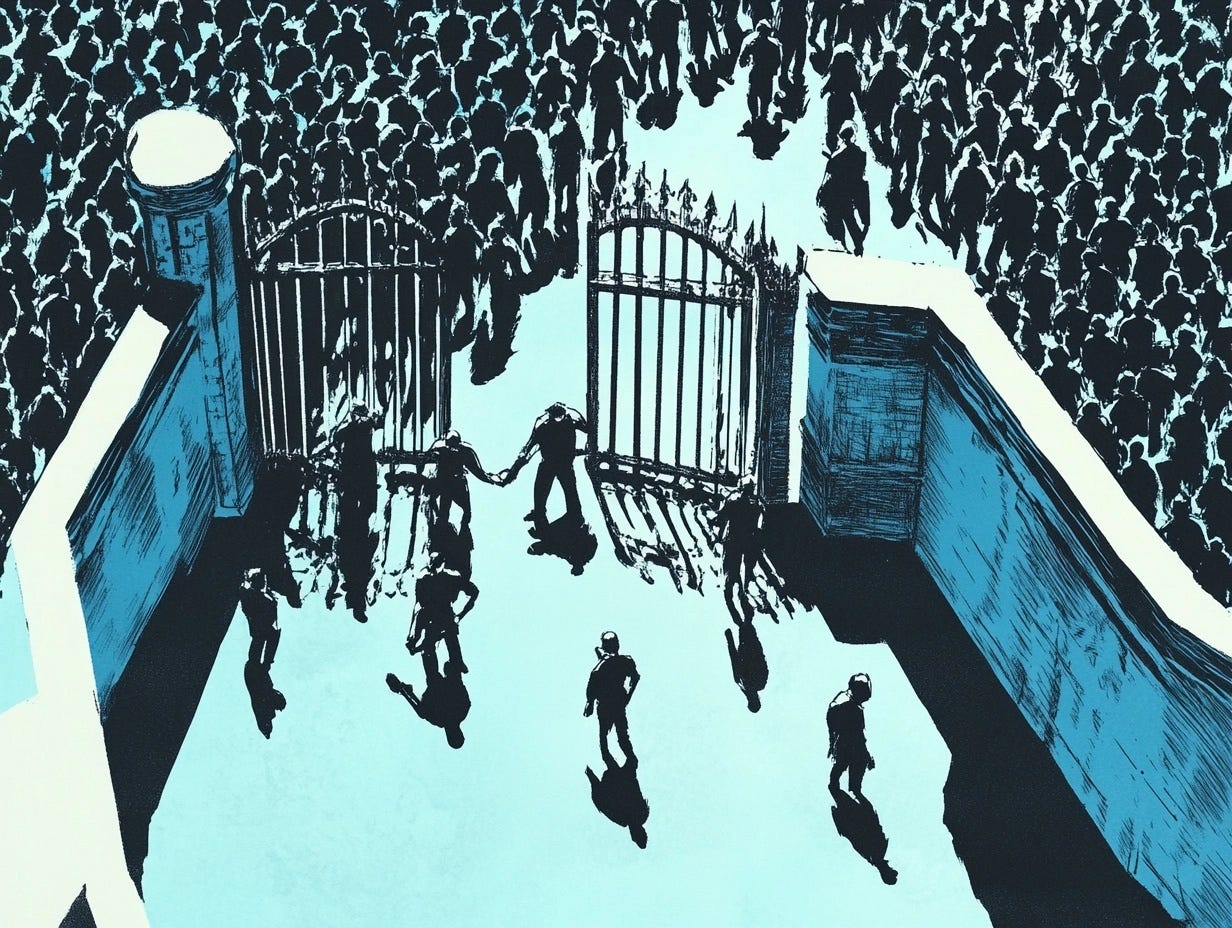Building Out Loud #11: Porous Edges in Organisations
3 atomic posts on deep tech venture building
Porous Edges in Organisations
We're not secret agents. We're innovators.
When asking ourselves, should we be careful about who to let inside, who knows what we know, the easiest choice is batten down the hatches. Nothing obviously bad happens with such a choice. Not like opening the doors and letting others gain our advantage.
But what does NOT happen because of this?
🥺 We don't learn from others about how our ideas could be better.
🥺 We do not mobilise a community to expand the impact of what is possible.
🥺 The benefit to the world only goes as fast as our own resources can muster.
🥺 We don't feel the pressure to relentlesly improve our part.
Do you really need a wall around your organisation?
I like porous edges, because it is at the edges that the magic happens.
Sherpas not Gatekeepers in Research Commercialisation
I met Tony Raven last week. Tony was the Chief Executive of Cambrigge Universities tech transfer office - Cambridge Enterprise.
A big idea I took from our conversations was that research commercialisation really comes down to two questions from the team working on the spin out.
❔Will this invention/technology be good for the world?
❔How can we help?
These questions are optimistic, momentum building and default to the idea of a successful outcome.
We need more 'sherpas' in research commercialisation. People that show the way, carry the maps, help those less travelled to understand that we can get to the destination. And then stay on the journey to the next way point, because the road is long.
In contrast, we actually have too many gatekeepers who make it hard to begin the journey and then vanish when the next stage commences.
I'm not just talking about tech transfer people here. I am looking at you VCs.
Carry as alignment in tech transfer offices?
Deep tech startups are not destined for success from the moment they spin out of a university. When they leave the nest to survive on their they must brave the daily attack from an outside world.
In venture capital, we know this. When we make an investment, we are making decadal commitment to a company. We know that companies falter many times along their lifetime and we are there for them to assist when it happens.
There are also opportunities that we see for our companies when we are in other environments and we are constantly bringing this advantage to companies to benefit from. This is still happening in years 7, 8, 9...
These activities are things we could do, or not do. No one would know if I saw a valuable opportunity for one of our companies and I did not bring it to them. If a company that I invested in fails, well, that's a shame, but that's on them.
But it does not happen. I am vigilant, obsessed, constantly scanning the universe for threats and opportunities.
To incentivise this, I am entrepreneurially aligned with the startup through the venture fund equivalent of equity that we call "Carried Interest" or "Carry". After our investors have been paid, some of the returns flow into a carry pool which is then distributed to the investment team. Some investors become very wealthy through their carry. And if the companies all fail, we get nothing.
I wonder what would happen if university tech transfer offices incentivised their teams this way?
WDYT?








Fascinating idea. Finding ways to better align the incentives of tech transfer offices with their spin outs is something I have been pondering over the last year. For example, I have seen many startups struggle to explain to tech transfer offices how tight the capital markets are for early-stage investment the past year. The tech transfer officers often have no clue. Some tech transfer office takes an equity stake (e.g., 5%) in spin outs. But it doesn't seem to resonate with the tech transfer officers.